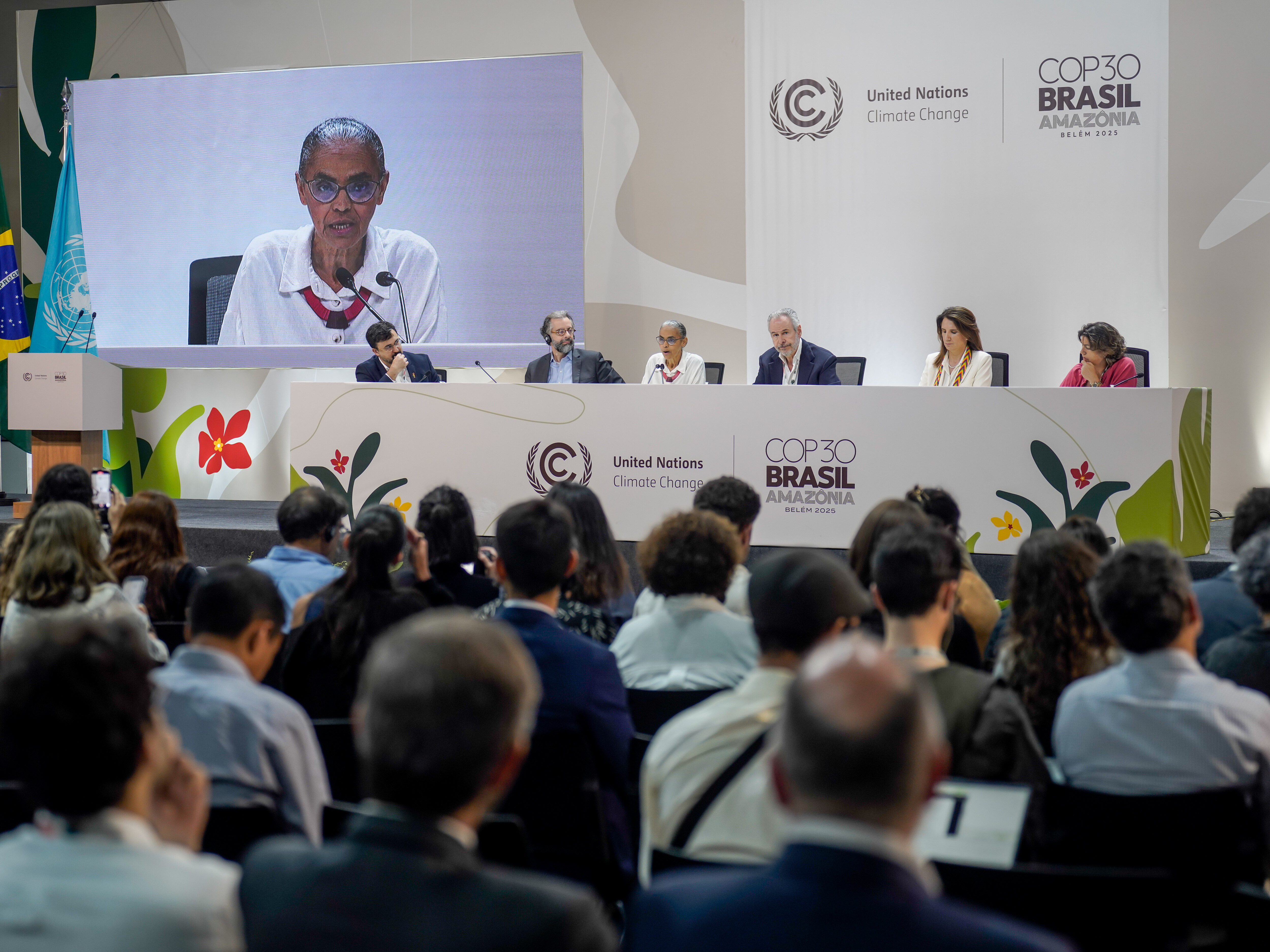Microplastics: Are we facing a new health crisis – and what can be done about it?

Researchers are studying the impact of microplastics on human health. Image: REUTERS/Eric Gaillard
Listen to the article
This article has been updated.
- Microplastics have been found in the land, sea and air, across the food chain and throughout the human body.
- While the full extent of the health impacts of microplastics are not yet known, studies indicate that they can increase the likelihood of heart attack, stroke and even Alzheimer's.
- With pollution ranked in the World Economic Forum's Global Risks Report 2025 as a top 10 threat, concerted and urgent action is required.
There's a growing body of evidence about how widespread microplastics have become – across land, sea and air – and the impact they could be having on human health. It is estimated that people inhale 68,000 microplastic particles every day and some experts believe we are in the midst of a plastic health crisis.
Microplastics have now been detected throughout the human body – including the blood, lungs, liver and even lower limb joints. Scientists have found evidence of microplastics in our brains, and further studies have revealed how these microplastics are accumulating and rapidly rising.
What are microplastics?
Microplastics are pieces of plastic debris under five millimetres in length, explains the US National Ocean Service.
Some – such as microbeads, typically found in cosmetics and toiletry products – are designed to be small, while other plastic gradually breaks down to this size.
Although microbeads are now banned in many countries, the problem of plastic pollution is far from resolved. According to UNEP, up to 23 million tonnes of plastic waste leaks into the world's water systems every year.
The many types of microplastics
Microplastics come in various forms, each with its own sources and environmental impacts. Primary microplastics are intentionally manufactured small plastic particles, including the microbeads used in cosmetics and the plastic pellets (nurdles) used in industrial manufacturing.
Plastic glitter, often made from polyethylene terephthalate (PET), is another common primary microplastic that poses environmental concerns.
Microfibers, typically shed from synthetic clothing during washing, are a significant contributor to microplastic pollution.
Secondary microplastics form from the breakdown of larger plastic items – such as abandoned fishing gear, plastic litter, cleaning sponges – through weathering and environmental exposure. A recent study even found that the breakdown of COVID-19 disposable face masks is contributing to microplastic pollution.
Then there are nanoplastics, which are even smaller particles, and therefore harder to detect and study. Research in the Alps discovered that nanoplastic particles from vehicle tyre wear are polluting the mountains there.
How do microplastics get into the food chain?
These tiny particles are often small enough to pass through water filtration systems, and we can then unknowingly ingest them.
Equally, research has shown that such microplastics can be transported in the atmosphere, spreading to even the remotest corners of the Earth.
In the ocean, these particles can be eaten by marine life – from fish to shellfish. A study in the US state of Oregon found microplastics in 98.9% of seafood samples, while a 2022 study found broken-down microplastics in blue mussels off the Australian coast. The research added to the findings of an earlier study that concluded, "if you eat mussels, you eat microplastics".
And it's not just marine life that could be affected. Microplastics have been found in foodstuffs including honey, tea and sugar, as well as in fruit and vegetables.
Microplastics are also making their way onto farmland through sewage sludge being used as fertilizer, according to a Cardiff University study. The BBC reports that much of this will then end up in waterways as a result of runoff from the top layer of soil.
Are microplastics harmful to human health?
While the full extent of the environmental and health impacts of microplastics are not yet known, a recent study found that nanoplastics and microplastics could be "emerging risk factors for cardiovascular diseases"; this research is backed by a 2024 study that points to the possibility that microplastics can increase the likelihood of heart attack, stroke or death. Another study, meanwhile, linked microplastics with inflammation and noncommunicable diseases.
In a 2025 study on mice, real-time imaging showed microplastics moving through their brains and blocking blood vessels. While the researchers said it would be "premature" to suggest that the process could replicate in human brains, the authors concluded that "the potential long-term effects of microplastics on neurological disorders such as depression and cardiovascular health are concerning".
The link between air pollution and premature births has already been established, but a study in the US has found both microplastics and nanoplastics in higher concentrations in the placentas from premature births than in those births that went to full term. “Our study hints at the possibility that the accumulation of plastics could be contributing to the occurrence of preterm birth,” Professor Kjersti Aagaard told The Guardian.
Meanwhile, microplastics in the placenta may be affecting hormone levels in the developing foetus, according to a study just published in ScienceDirect.
At the other end of the age spectrum, micro- and nanoplastics in the brain might be causing cognitive decline and even Alzheimer's disease, a US study recently found.
Some researchers say we're in the lull before the storm and that "alarmingly, a turning point is expected in the future, signalling a significant microplastic pollution outbreak if effective measures are not taken to mitigate it".
What's being done about microplastics?
With pollution ranked in the World Economic Forum's top 10 greatest threats to the world in the short and long term, concerted and urgent action is required if the world is to meet Sustainable Development Goal 14 to “prevent and significantly reduce marine pollution of all kinds” by 2025.
Certain measures are already in place. The Microbead-Free Waters Act of 2015 prohibits the manufacturing, packaging and distribution of rinse-off cosmetics and non-prescription drugs (such as toothpaste) containing plastic microbeads.
In March 2022, at the UN Environment Assembly, 175 nations agreed to end plastic pollution. The legally binding agreement addresses the issues of single-use plastic and recycling technology, among others. In 2023, the European Union banned the sale of loose plastic glitter. And in January 2025, the Forum's Global Plastic Action Partnership announced that seven new countries had joined the world's largest programme tackling plastic pollution.
In the EU, the Joint Research Centre has released "a world-first reference material which will help improve analysis of microplastic particles in water". The idea is that, with more consistent measurement methods in place, a more accurate global picture will be gathered of the microplastics issue, enabling policymakers and people to make more informed decisions about the best way forward.
What is the World Economic Forum doing about plastic pollution?
In the meantime, individuals and companies are coming up with innovative solutions.
For example, a team of researchers at Sichuan University has developed a tiny robot fish that can collect microplastics. The BBC reported on a removal method using vegetable oil, iron oxide and magnets. Following 5,000 tests, the technique was found to be 87% effective at extracting microplastics from water.
Operation CleanSweep and the US Environmental Protection Agency’s Trash-Free Waters initiative are both working to remove harmful human-made rubbish from the ocean. The latter just produced the third part of its ‘National Strategy to Prevent Plastic Pollution’.
The Forum's Global Plastic Innovation Network champions 18 different solutions to the plastic waste problem, including Wasser, which has developed a system that can remove 95% of microplastics from water, and Orgro Fibre, which makes biodegradable sapling bags to replace the single-use plastic ones commonly used in gardening centres.
Don't miss any update on this topic
Create a free account and access your personalized content collection with our latest publications and analyses.
License and Republishing
World Economic Forum articles may be republished in accordance with the Creative Commons Attribution-NonCommercial-NoDerivatives 4.0 International Public License, and in accordance with our Terms of Use.
The views expressed in this article are those of the author alone and not the World Economic Forum.
Stay up to date:
Plastic Pollution
Forum Stories newsletter
Bringing you weekly curated insights and analysis on the global issues that matter.
More on Nature and BiodiversitySee all
Tom Crowfoot
December 10, 2025







